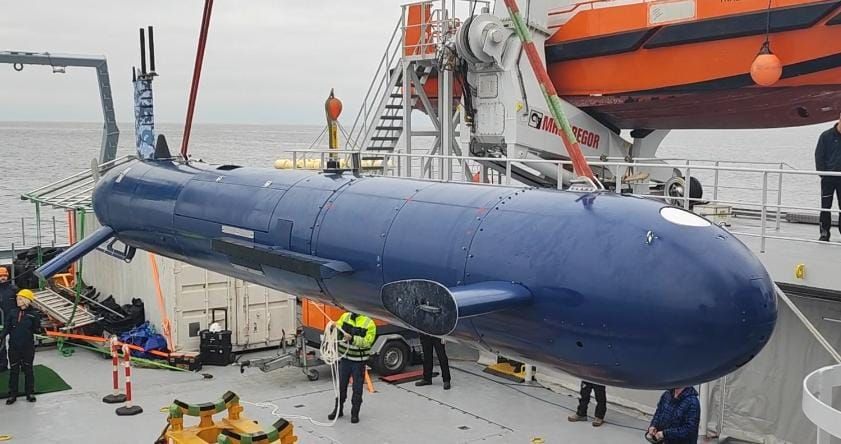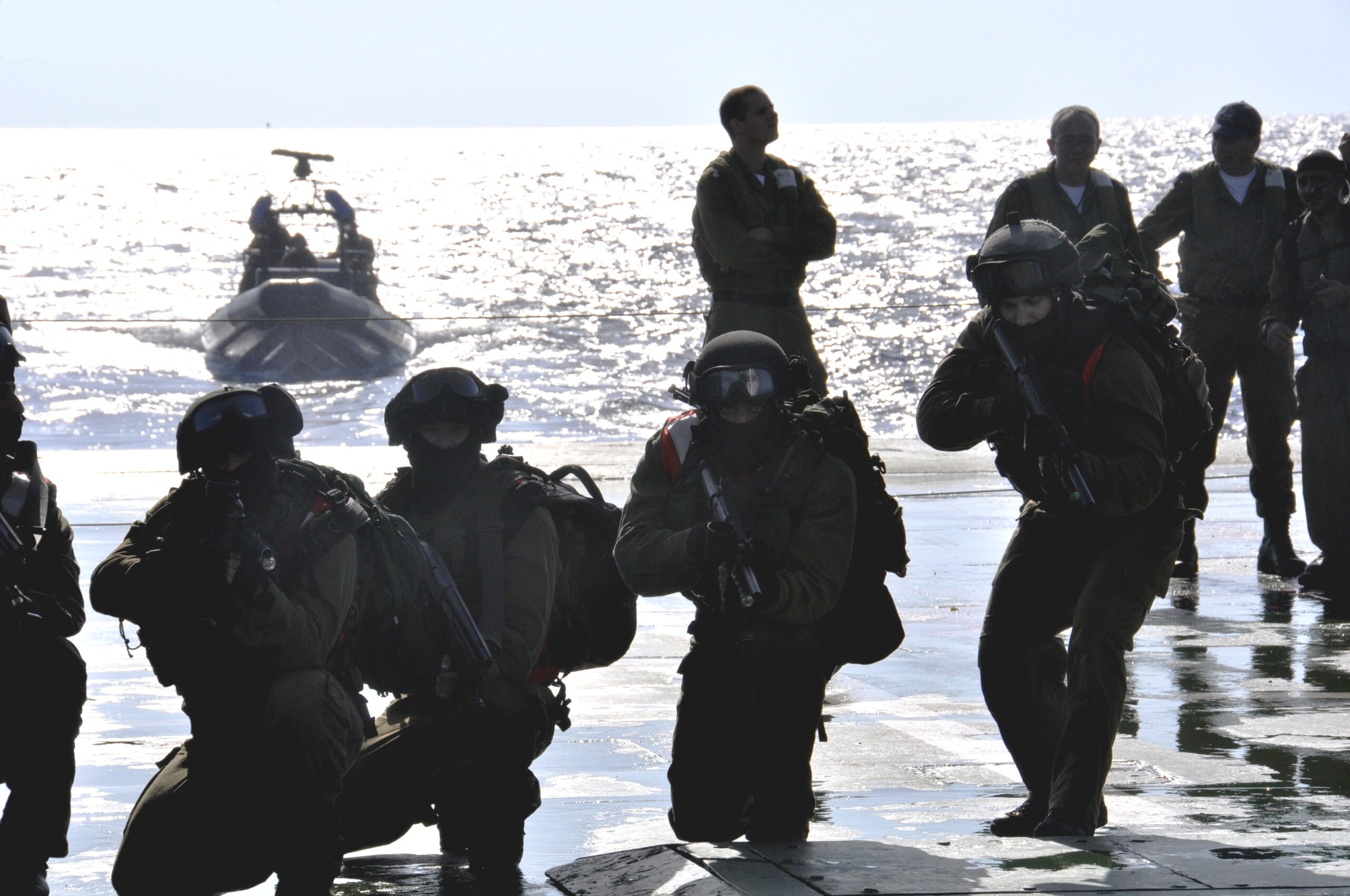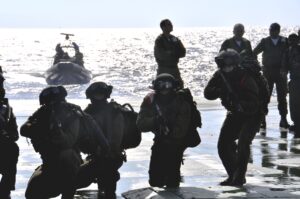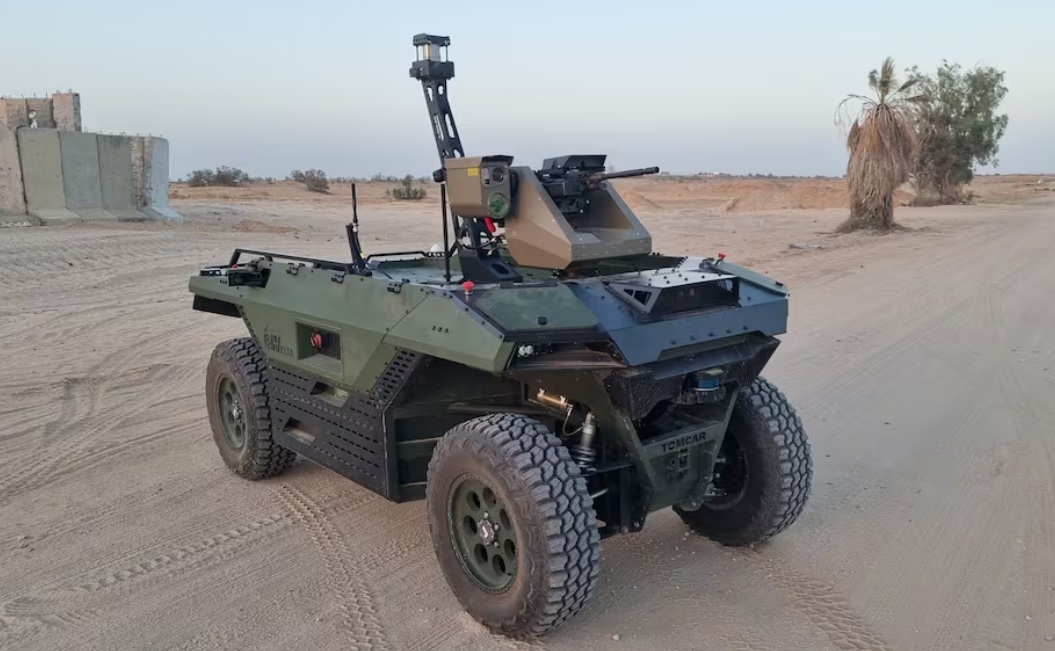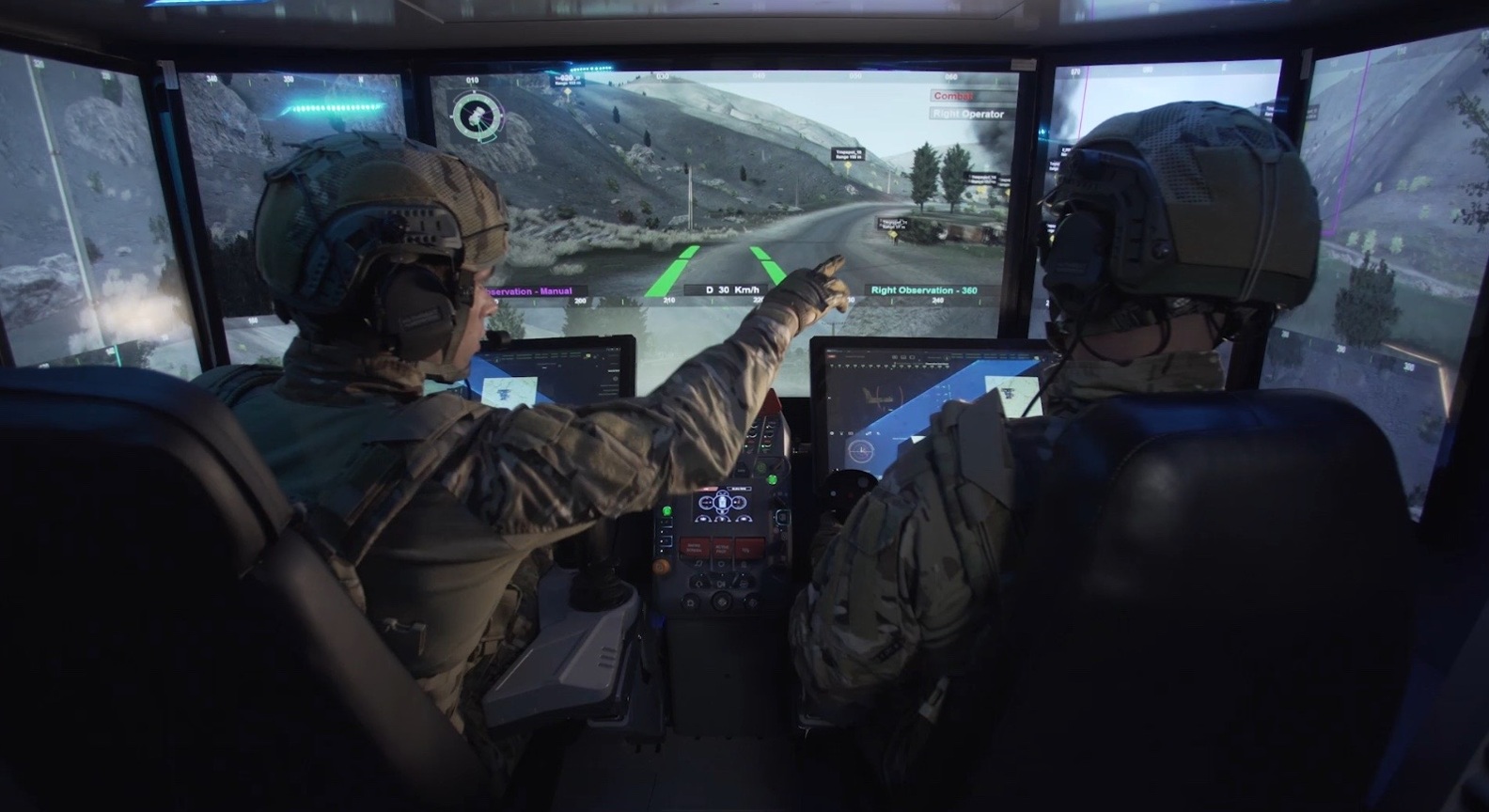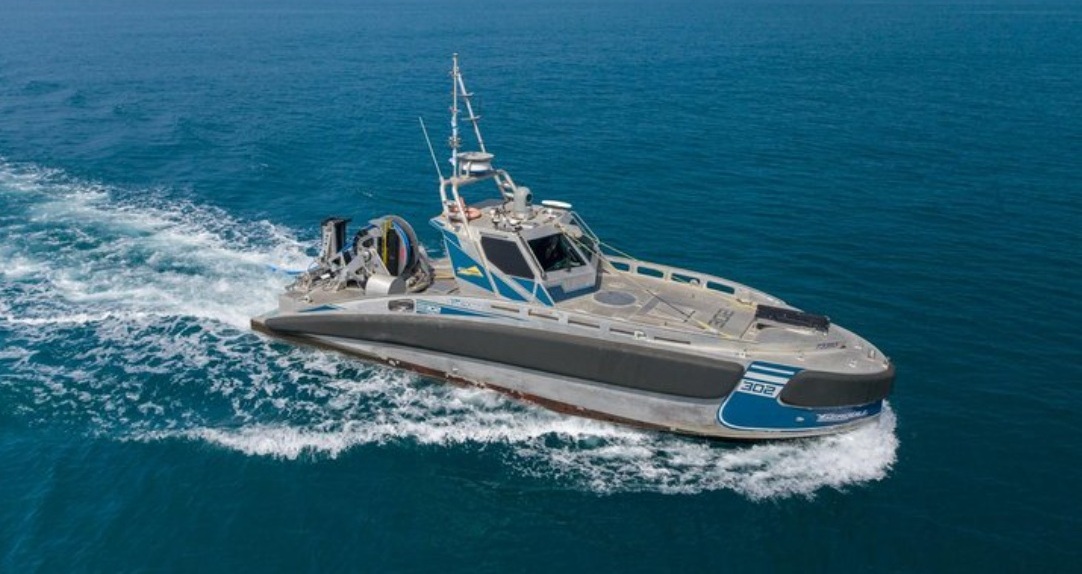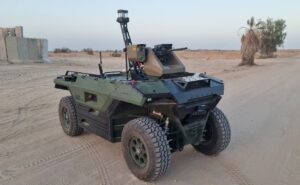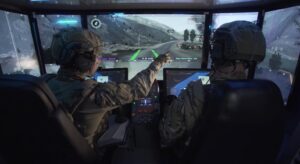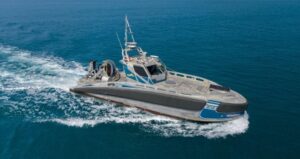BlueWhale operates without a crew, eliminating the danger to human life during high-risk missions.
By Hezy Laing
The Israeli Navy is entering a new era of underwater warfare with the testing of a groundbreaking autonomous submarine known as the BlueWhale.
Developed by Israel Aerospace Industries (IAI) in partnership with Atlas Elektronik, the BlueWhale represents a major leap in unmanned maritime technology, designed to enhance intelligence gathering and anti-submarine capabilities.
In contrast to Israel’s German-made manned submarines, BlueWhale is 100% made in Israel.
Measuring 10.9 meters in length and weighing 5.5 tons, the BlueWhale is engineered for long-duration missions, capable of remaining submerged for anywhere between 10 to 30 days.
Despite its compact size, which allows it to be transported in a standard 40-foot shipping container, the submarine boasts impressive operational depth of up to 300 meters and a top speed of 7 knots.
What sets the BlueWhale apart is its sophisticated sensor suite.
A telescopic mast rises above the surface to deploy radar, electro-optical, infrared, and signals intelligence sensors, while its sonar systems are designed to detect enemy submarines and identify seabed mines.
The vessel is also equipped with satellite communications, enabling real-time data transmission to command centers, even while operating covertly in hostile waters.
The BlueWhale’s autonomous design allows it to function without human intervention for extended periods, dramatically reducing the risks and costs associated with traditional manned submarine missions.
Its stealth and endurance make it ideal for surveillance operations along sensitive regions such as the Gaza coastline and the Lebanese maritime border.
The submarine has already undergone successful trials, including a two-week evaluation by the German Navy in the Baltic Sea.
It integrates seamlessly into existing naval situational awareness systems and is expected to serve as a force multiplier in future maritime operations.
Boaz Levy, President of IAI, highlighted the strategic significance of the BlueWhale, stating, “We are facing a new era in which submarines will change the situational picture and operational capabilities like the changes brought about by unmanned aircraft in the past.”
As the Israeli Navy continues to refine and deploy this advanced platform, the BlueWhale could redefine the global approach to underwater defense, offering a glimpse into the future of autonomous naval warfare.
Autonomous submarines are rapidly emerging as a superior alternative to manned vessels in modern naval warfare, offering a range of strategic, operational, and technological advantages that are reshaping underwater defense.
One of the most significant benefits is risk reduction.
Autonomous submarines, such as Israel’s BlueWhale, can operate without a crew, eliminating the danger to human life during high-risk missions.
This makes them ideal for intelligence gathering, surveillance, and reconnaissance (ISR) in hostile environments, where manned submarines would face considerable threats.
Endurance and stealth are also key advantages.
These unmanned systems can remain submerged for extended periods—often weeks—without the need for life-support systems, food, or crew rotation.
Manned subs can usually remain submerged for a maximum of one week.
Their smaller size and lack of human constraints allow for deeper dives and quieter movement, making them harder to detect and ideal for covert operations.
From a cost-efficiency standpoint, autonomous submarines are less expensive to build, maintain, and deploy.
They require fewer resources and logistical support, which is especially valuable for prolonged missions or when operating in remote areas.
Their modular design also allows for easier upgrades and integration of new technologies.
In terms of operational flexibility, autonomous subs can be deployed in swarms or coordinated networks, covering vast areas of the ocean simultaneously.
This capability enhances anti-submarine warfare (ASW), mine detection, and seabed monitoring, particularly in strategic zones like the Mediterranean or the Red Sea.
While manned submarines still offer advantages in complex decision-making and real-time human judgment, the rise of AI-driven systems and advanced sensors is narrowing that gap.
Autonomous subs can now detect enemy vessels, map terrain, and transmit data in real time, often outperforming human-operated platforms in speed and precision.
As global navies—including those of Israel, the U.S., and the U.K.—invest heavily in autonomous underwater vehicles, it’s clear that these systems are not just complementary tools but potential replacements for traditional submarines in many mission profiles.
The shift mirrors the transformation seen in aerial warfare with the rise of drones, signaling a new chapter in maritime strategy.


